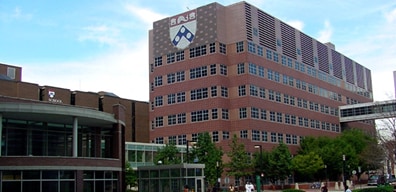Funded Injury Control Research Centers (ICRCs)

School of Medicine
University of Pennsylvania
Director: Zachary F. Meisel, MD, MPH, MSHP
Address: Blockley Hall 4th Floor, 423 Guardian Drive, Philadelphia, PA 19104-6021
Phone: 215-746-5618
Email: zfm@pennmedicine.upenn.edu
Website: http://www.penninjuryscience.org/
Twitter: @PennInjury
Facebook: https://www.facebook.com/UnivPennsylvania

The Penn Injury Science Center (PISC) at the University of Pennsylvania focuses on the reduction of violence and injuries through the highest caliber science, education, and outreach.
We address the intersecting impacts of risk and protective exposures across space and time. We call this our “space-time lens,” which allows us to clarify our focus on these key questions:
- Why do injuries occur where they do and when they do?
- How, where, and when can we prevent them?
Our public slogan is “Stop It, Fix It, Live On.” This communicates to both our internal and our external stakeholders that our attention is equally:
- primary (stop the event),
- secondary (fix the causes of the event), and
- tertiary (live on in a context of safety rather than risk) injury and violence prevention.
Stop It, Fix It, Live On communicates that we aim for rapid, efficient translation of research to real-world practice. This guides our Center goals which include:
- Using a space-time lens embraced by our Center to inform how interventions are developed and tailored to address the injury and violence prevention priorities of vulnerable populations.
- Generating new knowledge by completing four research projects on,
- Adverse Childhood Experiences (ACEs),
- distracted driving,
- residential falls, and
- opioid use disorder.
- Cultivating trainees to have the perspectives and skill sets to pursue priority research issues through a space-time scientific lens and enhance the potential of the next generation of injury scientists.
- Collaborating with stakeholders from problem identification, to scientific discovery, to policy and practice. These steps infuse injury science with stakeholder priorities and activities with evidence-based science “at the right place and the right time.”
The Center is organized around Research, Outreach, and Training and Education Cores with management from an Administrative Core and support and input from Internal and External Advisory Boards, and a Community Action Board.
We take advantage of a robust and highly diverse group of scientists from epidemiology, biostatistics, nursing, criminology, communications, anthropology, demography, city planning, public health, engineering, pediatrics, emergency medicine, surgery, and global health. Its collective training and outreach serve a wide range of students, post-doctoral fellows, junior and senior faculty, professional staff, and community citizen-scientists.
Core Research Projects
- Opioid Overdose — Towards Making “Warm Handoff” Pathways to Treatment the Default Option for Patients With Opioid Use Disorder Presenting in the Emergency Departments
- Motor Vehicle Crashes — Space -Time Characteristics of Adolescents’ Cell Phone Use While Driving
- ACEs — The Contribution of ACEs and Neighborhood Exposures to Health Outcomes Experienced by Seriously Injured Black Men
- Falls — Using Innovative Technology to Facilitate Fall Prevention for Older Adults With Mild Cognitive Impairment
Exploratory Research Project
- Traumatic Brain Injury (TBI) — Investigating the Effects of Concussion in Women on Postpartum Depression